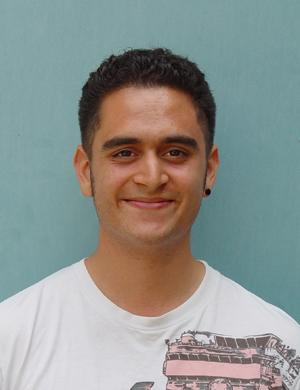GCC serves more students than the state funds according to the 2009 Campus Profile.
The college went from 547 unfunded full-time equivalent students (FTES) in 2007-2008 to 2,347 in 2008-2009.
“The budget will be negative next year,” said Associate Dean of Institutional Research and Planning Edward Karpp. “Glendale hasn’t cut nearly as much as other community colleges in the state despite the decrease in state funding.”
The 2009 Campus Profile, compiled by GCC’s Research and Planning department, provides an in-depth look at the college with an abundance of statistics, ranging from student demographics to the college’s fiscal condition.
In the 2003 spring term, 42 percent of credit students reported having trouble getting the classes they wanted. In the next five years, the percentage of students having problems with scheduling decreased to 25 percent. However, in spring 2009, the number of students having problems with scheduling shot up by 8 percent to a new total of 33 percent.
“Satisfaction went down because students weren’t able to get the classes they wanted because of budget cuts,” said Karpp.
This fall, GCC will be implementing the new “block schedule.” Karpp said it is unclear whether students will react favorably to the new scheduling. He also said that the current percentage of students having difficulty getting into classes may increase due to classes being cut because of the budget.
The 2009 Campus Profile also includes a section on student and course outcomes, specifically in enrollment, retention and success rates by division. The report defines retention as the percentage of students enrolled who receive a grade other than a “W.” Success is defined as students who receive passing grades, such as a “C” or higher.
In the 13 divisions, health sciences had the highest overall success rate with 89 percent and mathematics had the overall lowest success rate with 49 percent. English had an overall success rate of 67 percent. Visual and performing arts had an overall success rate of 70 percent. These percentages were for the years 2006 to 2008.
In the 2008 fall term, 58 percent of credit students were female. Out of 25,015 students, there are only 9,952 male students in GCC. Women have outnumbered men 60 to 40 percent since the mid ’90s. This correlates with national college statistics by the American Council on Education, which reported that 57 percent of college students are female.
The number of Glendale transfer students per year has increased by more than 70 percent since the late ’90s. Cal State Northridge and Cal State Los Angeles accounted for about 69 percent of all Cal State transfers in 2007-08. About 51 percent of all GCC students who transfer into the UC system transfer to UCLA.
According to this year’s the Accreditation Evaluation Report, 51 percent of credit students are of Armenian and/or of Anglo descent. This is a 3 percent increase from fall 2006.
Hispanics are the second largest group with 14 percent.
Asian and Pacific Islanders make up 13 percent and only 3 percent of credit students are black.
There is an even larger ethnic discrepancy in the GCC staff. About 71 percent are white, while 13 percent are Hispanic. The other 16 percent are comprised of 8 percent Asian, 4 percent black, 3 percent Filipino, 1 percent American Indian and 1 percent unknown.
Sixty-two percent of students at Glendale are under 25 years old. 33 percent of students are 26-50 years old. Making up 5 percent of the student population, 819 students are over the age of 51.
Copies of the 2009 Campus Profile can be found at Research and Planning located in SF100. For more information call (818) 240-1000, ext. 5390. The 2010 Campus Profile will be published in September.?

